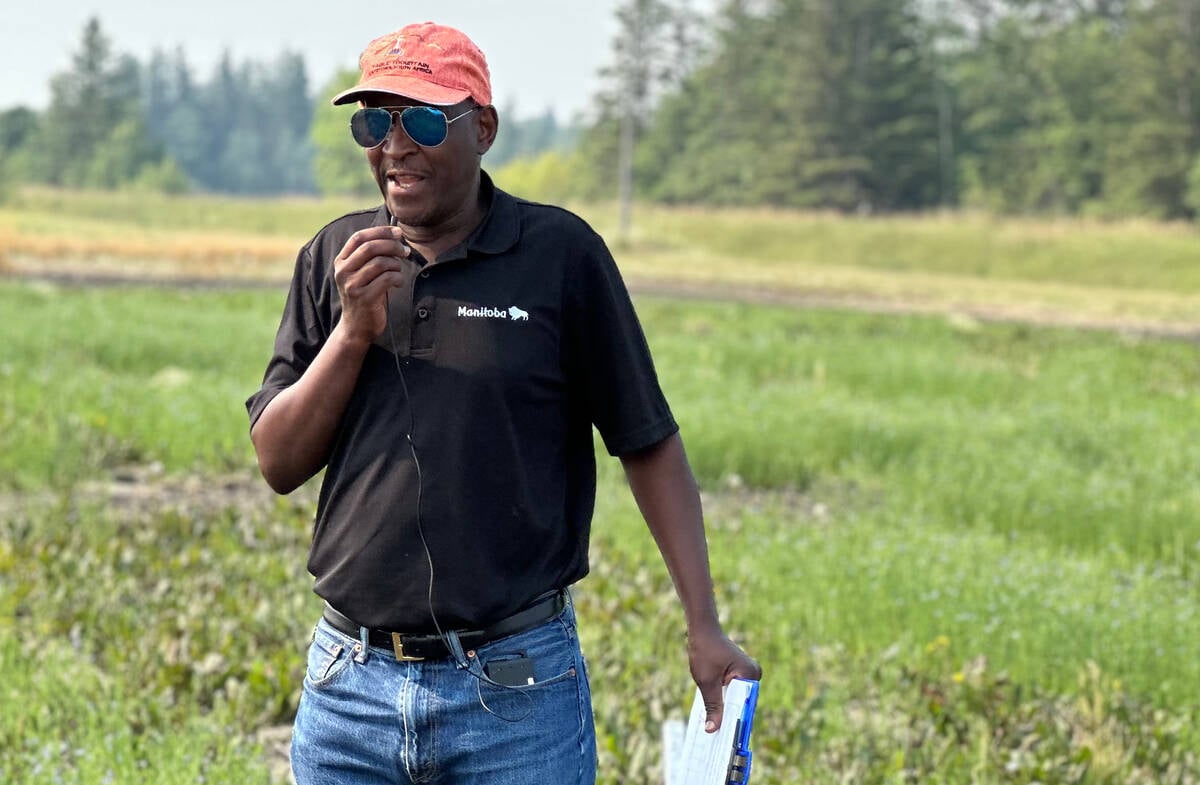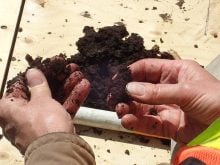Glacier FarmMedia – Cover crops aren’t a magic bullet but they’re worth a try.
That was the message an American expert delivered to a group of Canadian producers who considered whether the much-hyped soil health practice can work during the short growing season.
“Cover crops don’t solve everything,” said soil scientist Abbey Wick. “It’s not all puppies and rainbows.”
Read Also

How much nitrogen can farmers really cut?
Manitoba fertilizer trials look for nitrification inhibitor sweet spot, to lower greenhouse gas emissions and cost without hurting yield.
Many prairie farmers are skeptical about whether cover crops are worth the bother and expense, and they have legitimate concerns, said the North Dakota State University soil scientist. But that doesn’t mean the practice can’t be adapted and employed profitably in Alberta, Wick told about 40 farmers and agronomists who gathered in Brooks, Alta.
“I know the window is tight for getting a cash crop and a cover crop, but I think inter-seeding is where farmers are interested,” she said. “And we’ve been doing a lot of that in North Dakota.”
There are important questions to consider when thinking about cover crops, said Wick. What equipment is needed? Should you broadcast or seed? What should the mix contain to avoid harming cash crops?
“It does sound like there is some opportunity here, after some small grains or short-season crops, to do a cover crop,” she said. “What do you put in the mix that’s frost tolerant? For here, I can imagine the grazing benefits would be huge because there is so much livestock.”
There are several other reasons to plant cover crops, she added.
They boost water infiltration, add organic matter, suppress weeds and reduce soil erosion. Deep-rooted cover crops break up compacted soil while legumes fix nitrogen. And they can be grazed or baled as feed.

Those benefits attracted cattle producer Ella Hiebert to the practice. She’s interested in using cover crops for fall grazing on her irrigated operation, a strategy that could lower her feed costs.
“I’m figuring out which crops work best together, because you have to worry about herbicides and pesticides when you are spraying different crops,” said Hiebert, one of many people who attended the event put on by the Foothills Forage and Grazing Association.
“I guess you must do your own research and see where you can pencil it in. And you might not be able to do it with every single crop you have. Any little bit of money you can save always helps.”
Wick endorsed that approach.
“I think it’s really important to not just take prescriptions from people,” said Wick when asked about her advice for farmers. “Finding other farmers who are using these practices in your area — or even not in your area — can be really helpful.”
For example, while cover crops with legumes can increase soil nitrogen, whether they offer a meaningful boost will depend on a host of local factors, she said in response to one question.
“That’s different for every system,” said Wick. “It’s different for us in North Dakota as it is in Maryland, as it is up here. So that’s really where the work must come in and the research to find out when is that released and when can you rely on it.”
Planting check strips to assess the effectiveness of cover crops is one idea, she added. Farmers can apply a full fertilizer application to a check strip along the edge of a field and then reduce the rates across the field.
“If (the field) is looking like it needs more nitrogen, go out and side dress,” she said.
That may sound like additional work but it can be the opposite.
“Have fun with your system. I’ve noticed a lot of farmers as they started down the soil health journey, they are saying they’re having more fun farming than in the past. That creative side of things I think is really enticing.”
The event, which included a field tour of the Gemstone Cattle Company, drew many people with a long-standing interest in soil health, including Gem area ranch manager Marcel Busz. He grows perennial forages under irrigation, which means he’s basically got a year-round cover crop. The rest of his operation is native range.
“What comes into play is more of our grazing practices,” he said. “We do a lot of rotational grazing, so each piece of ground gets rest. Right now, we are giving a little more than a year of rest before we graze again so that all the plants have a chance to go through their whole life cycle. Wick is kind of preaching to the choir because I’ve heard a lot of this stuff before.”
But Busz was taken with Wick’s idea of using check strips to determine whether a cover crop adds sufficient nitrogen.
“That way you can take advantage if the cover crop is giving you an advantage on fertility,” he said. “And if not, you can put on some fertility in case you need to. You have that check strip to gauge whether to add some fertility.”
That advice appealed to Daniel Doerksen for a different reason.
The 36-year-old said he’s heard plenty of talk about eliminating chemicals and fertilizers on farms, but farmers need to make a living.
“And Abbey is kind of saying, ‘Well, we need to do what is best for the land and what’s best for our bottom line,’” said Doerksen, co-owner of Gemstone Cattle Company. “As producers I think we need to do what we can to reduce input costs.
“I like the fact that she said we must still feed the plants. If we feed the plants up top, it’s going to feed the soil on the bottom.”
– This article was originally published at the Alberta Farmer Express.















